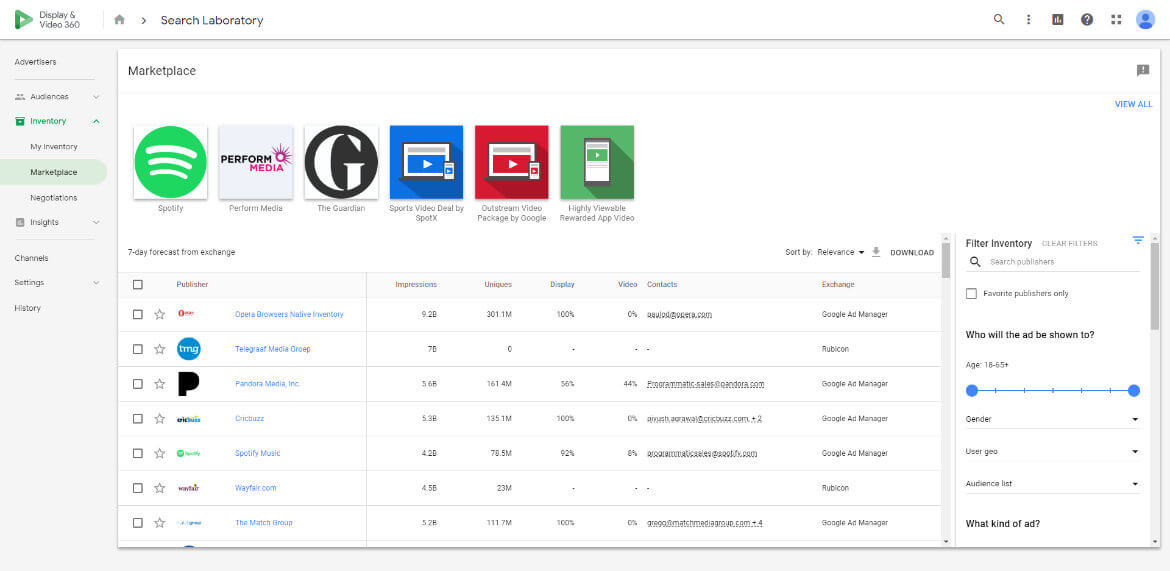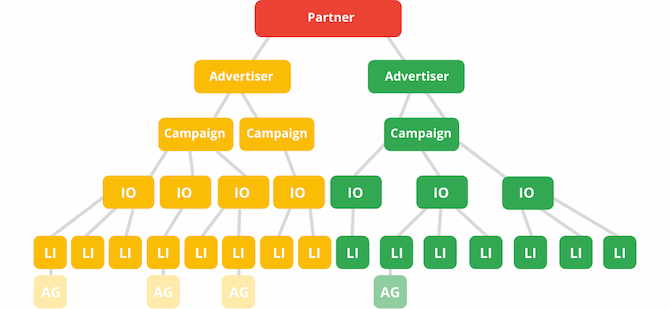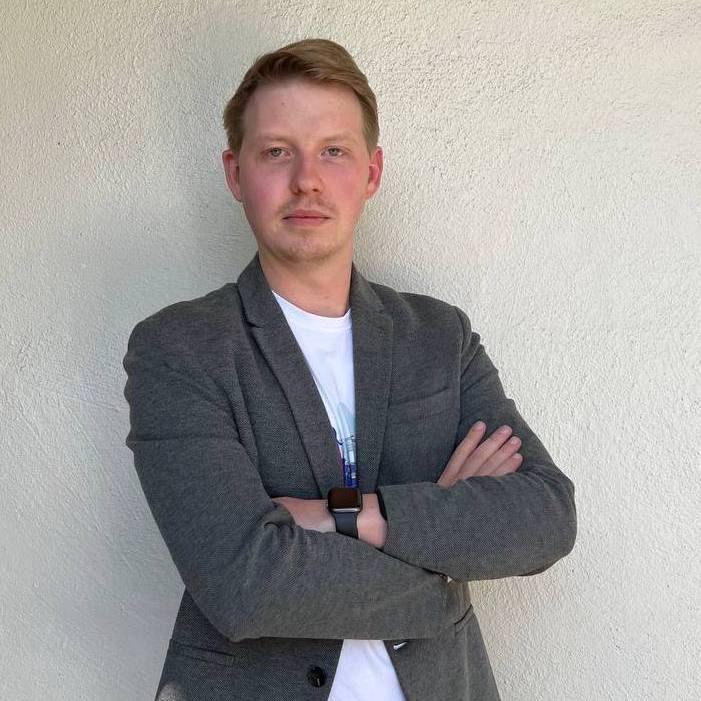Google offers two robust solutions for display advertising—Google Display Network (GDN) and Display & Video 360 (DV360). While both platforms are part of the Google ecosystem, they serve distinct roles depending on the scale, complexity, and objectives of campaigns.
This guide explores the core differences between GDN and DV360, offering insights into how each platform can best serve different advertising needs.
Key Takeaways:
- Core Difference: GDN is an ad network accessed via Google Ads for simplified display campaigns. DV360 is a powerful enterprise demand-side platform (DSP) for comprehensive, programmatic media buying across multiple channels.
- Reach and Inventory: GDN is limited to Google's owned properties and partner sites. DV360 accesses GDN inventory *plus* dozens of other ad exchanges, premium publishers, and Connected TV (CTV) channels.
- Targeting Power: DV360 offers far more advanced targeting, integrating first, second, and third-party data, lookalike modeling, and granular audience controls that GDN lacks.
- Cost and Access: GDN is accessible to anyone with a Google Ads account and often uses a cost-per-click (CPC) model. DV360 typically requires significant ad spend and a direct contract or agency partner, operating on a CPM model with additional platform fees.
- Best For: GDN is ideal for small to medium-sized businesses (SMBs) and those new to display advertising. DV360 is built for large agencies and enterprise advertisers managing complex, large-scale, multi-channel advertising campaigns.
Understanding the Fundamentals: What Are GDN and DV360?
Before diving into a granular comparison, it’s essential to establish a clear definition of each platform and its place within the broader advertising ecosystem.
What is the Google Display Network (GDN)?

The Google Display Network is a massive collection of over two million websites, videos, and apps where your display ads can appear. It's not a standalone platform but rather a targeting option and inventory source available directly within the Google Ads interface.
Think of it as Google's owned-and-operated "walled garden" for display advertising. It reaches over 90% of global internet users, making it an incredibly powerful tool for brand awareness, consideration, and remarketing.
Campaigns on GDN are managed alongside your Search and YouTube campaigns in Google Ads, offering a unified (though simplified) management experience for advertisers already comfortable with that environment.
Its primary strengths are its enormous scale within Google's ecosystem and its ease of use.
What is Display & Video 360 (DV360)?

Display & Video 360, or DV360, is Google's flagship demand-side platform (DSP).
A DSP is a software platform that allows advertisers to buy and manage ad inventory from multiple ad sources through a single interface using programmatic, real-time bidding (RTB). DV360 is part of the premium Google Marketing Platform (GMP) suite, designed for large advertisers and agencies.
Crucially, DV360 allows you to buy ad space not only on the GDN but also across a multitude of other ad exchanges (like OpenX, Magnite, and Xandr), private marketplaces (PMPs), and directly from premium publishers.
It consolidates media planning, creative management, audience data, and optimization for display, video, audio, and CTV advertising campaigns into one powerful tool. It is the command center for sophisticated, data-driven media buying.
GDN vs. DV360 Comparison Table
This table provides a high-level summary of the key differences between the two platforms across the most critical dimensions of digital advertising.
Reach and Inventory: Google's Walled Garden vs. The Open Exchange
One of the most significant differentiators between GDN and DV360 is the breadth and quality of ad inventory each platform can access.
GDN's Extensive but Limited Scope
The Google Display Network boasts impressive numbers, with access to millions of websites and apps that have partnered with Google through AdSense. This includes Google's own high-value properties like YouTube and Gmail.
For many advertisers, this reach is more than sufficient, especially for campaigns focused on brand awareness or retargeting website visitors. However, it's a closed ecosystem.
You are limited to the inventory Google directly controls or has partnerships with.
DV360's Universal Access
DV360 operates on a completely different scale. As a premier DSP, it connects to the entire programmatic ecosystem. This means you can bid on inventory from:
- The Google Display Network: DV360 can access all of the inventory available on GDN.
- Dozens of Ad Exchanges: It plugs into major ad exchanges, giving you access to inventory from publishers that don't use Google AdSense.
- Private Marketplace (PMP) Deals: Negotiate semi-private auctions with premium publishers for higher-quality inventory before it goes to the open auction.
- Programmatic Guaranteed (PG) Deals: Lock in fixed pricing and guaranteed inventory with top-tier publishers, similar to a traditional direct media buy but executed programmatically.
- Emerging Channels: Access inventory for Connected TV (CTV), digital audio (e.g., Spotify, Pandora), and digital out-of-home (DOOH) advertising campaigns.
This universal access gives DV360 users the ability to execute truly holistic media plans and reach users on premium, brand-safe sites that are simply unavailable through GDN.
Audience Targeting Capabilities: Precision vs. Simplicity
Both platforms leverage Google's vast user data, but DV360 takes audience targeting to an enterprise level of granularity and control.
GDN's Standard Targeting Suite
Within Google Ads, GDN provides a robust but standard set of targeting options that are powerful for most use cases:
- Demographics: Age, gender, parental status.
- Affinity Audiences: Broad interest categories (e.g., "Sports Fans").
- In-Market Audiences: Users actively researching or planning to buy a product or service.
- Custom Audiences: Build audiences based on keywords, URLs, and apps people are interested in.
- Remarketing: Target users who have previously interacted with your website or app.
These options are effective but rely solely on Google's first-party data signals.
DV360's Advanced Audience Engine
DV360 includes all of GDN's targeting options and adds several layers of sophistication, making it a powerhouse for data-driven advertisers. The ability to integrate multiple data sources is a key advantage, but this can create challenges.
DV360’s targeting options include, but not limited to:
- Affinity and In-Market Audiences: Similar to GDN, but with deeper segmentation and customization options using more granular data.
- Custom Affinity Audiences: This allows advertisers to build highly personalized audience segments based on URLs, apps, and keywords. Advertisers can refine their targeting to align more closely with specific behaviors and interests.
- Custom Intent Audiences: Enables advertisers to target users based on their search behavior or other intent-driven actions, such as specific purchases or recent interests.
- Lookalike Modeling: DV360 allows advertisers to create lookalike audiences, expanding their reach by targeting new users who behave similarly to existing high-value customers.
- Third-Party Data Integration: One of DV360’s biggest advantages is its integration with a wide range of third-party data providers, allowing for highly specialized audience segments based on purchase behavior, financial demographics, media consumption, and more.
- Programmatic Remarketing: Beyond basic remarketing, DV360 allows for advanced dynamic remarketing, enabling personalized ads based on the specific actions a user has taken on a website or app.
- Geo and Device Targeting: DV360 provides advanced geographical and device targeting, allowing advertisers to tailor their campaigns to specific regions, devices, or even connection types.
Creative Formats and Capabilities: Standard Ads vs. Dynamic Storytelling
The creative potential differs significantly, with DV360 offering advanced tools to create personalized and engaging ad experiences at scale.
GDN's Efficient Creative Options
GDN focuses on simplicity and efficiency. Its flagship format is the Responsive Display Ad, where you provide assets (images, logos, headlines, descriptions), and Google's machine learning automatically assembles them into native ads that fit any available ad space. This simplifies creative production immensely. You can also upload standard image and HTML5 ads.
DV360's Rich Media & Dynamic Creative
DV360 is built for impactful, data-driven creativity. Its key features include:
- Dynamic Creative Optimization (DCO): This is a game-changer. DCO allows you to create thousands of ad variations from a single creative shell. The ad content (e.g., product image, price, call-to-action) can change in real-time based on the user's location, browsing history, weather, or any other data signal you feed into the system.
- Ad Canvas & Format Gallery: Build rich media and interactive ads directly within the platform using pre-built templates, without needing specialized creative agencies.
- Support for All Formats: DV360 natively supports a wider range of formats, including high-impact video, Connected TV ads, audio ads, and native ads that seamlessly integrate with publisher content.
- Integration with Campaign Manager 360: Seamlessly traffic and manage advanced creatives built by your team or agency.
Cost, Bidding and Access: How You Pay and Who Gets to Play
The financial and accessibility models of GDN and DV360 are starkly different, reflecting their target users.
GDN: Accessible and CPC-Focused
Anyone with a Google Ads account and a credit card can start a GDN campaign. There are no minimum spend requirements. The primary bidding model is Cost-Per-Click (CPC), which is ideal for performance-focused advertisers. While CPM and CPA bidding are available, the platform's DNA is rooted in driving clicks and conversions efficiently.
DV360: Enterprise-Level and CPM-Based
Access to DV360 is more exclusive. It generally requires either a direct contract with Google (which involves substantial minimum ad spend commitments) or working through a certified Google Marketing Platform Partner or agency. The pricing structure is more complex:
- Media Cost (CPM): You pay for impressions on a Cost-Per-Thousand (CPM) basis.
- Platform Fee: Google charges a percentage of your media spend as a fee for using the DV360 platform.
- Data Fees: If you use third-party audience data, you will incur additional CPM costs for that data.
This model is standard for DSPs and reflects a focus on premium inventory and brand-building campaigns where impressions and reach are key metrics.
Campaign Management and Workflow: Google Ads UI vs. a True DSP
The day-to-day experience of managing campaigns highlights the difference between a simple ad network interface and a professional-grade media buying platform.
GDN's Simplified Workflow
Campaign setup in GDN is straightforward and follows the familiar Google Ads structure: Campaign > Ad Group > Ad.
It's designed for quick launches and is easy for marketers of all skill levels to learn. Optimizations are often guided by Google's recommendations and automated bidding strategies.
DV360's Granular Campaign Hierarchy

DV360 uses a more complex, multi-layered hierarchy that provides granular control for media buyers:
- Advertiser: The top-level entity for a brand.
- Campaign: A high-level container for a specific marketing initiative with an overall budget and flight dates.
- Insertion Order (IO): Defines a budget, flight dates, and high-level goal for a specific part of the campaign.
- Line Item (LI): This is where the real work happens. You define targeting, bidding, frequency caps, and creative assignments at this level. A single IO can have dozens of line items targeting different audiences, inventory, or geolocations.
This structure allows for meticulous budget management and performance analysis. However, it also demands a higher level of expertise and can be overwhelming for beginners. Managing this complexity often necessitates robust automated reporting to keep track of performance across hundreds of line items.
Reporting: Unlocking Deeper Performance Insights
GDN's Standard Google Ads Reports
GDN reporting lives within the Google Ads UI. You get standard metrics like clicks, impressions, CTR, conversions, and conversion value. While you can segment by device, location, and audience, the insights are largely confined to what happened within the Google Ads ecosystem. Attribution is typically limited to Google's standard models (e.g., last-click).
DV360's Advanced Analytics and Attribution
DV360 is built for holistic measurement across the entire customer journey. It integrates deeply with the Google Marketing Platform to provide insights that GDN cannot.
- Granular Reporting: DV360's Report Builder allows you to pull hundreds of different dimensions and metrics, providing visibility into performance by ad exchange, publisher domain, viewability, audience segment, creative variation, and more.
- Floodlight Tags and Conversion Modeling: By using Floodlight tags (from Campaign Manager 360), you can track detailed post-impression and post-click conversions far beyond a simple purchase, and leverage Google's AI for conversion modeling in a privacy-safe way.
- Advanced Attribution: Connect DV360 to Google Analytics 360 to unlock data-driven marketing attribution modeling. This allows you to see how your programmatic display and video campaigns influence conversions across other channels like Search, Social, and Email, moving far beyond last-click analysis.
- Cross-Device Insights: Leveraging Google's vast device graph, DV360 can report on conversions that start on one device (e.g., a user sees an ad on their mobile phone) and finish on another (e.g., they complete the purchase on their desktop).
Unified Reporting for Full-Funnel Visibility Across GDN & DV360
Both GDN and DV360 offer built-in reporting, but neither provides a holistic view of performance across the full customer journey.
GDN surfaces tactical ad-level metrics inside Google Ads, while DV360 delivers deeper log-level reporting and programmatic insights, yet both remain siloed from downstream conversion, CRM, and revenue data.
For enterprise teams optimizing toward pipeline, LTV, and real business impact, platform-only reporting creates blind spots and delays actionable decision-making.
Improvado eliminates those gaps by aggregating GDN, DV360, and all other paid media data into a unified, analysis-ready environment. It automates data ingestion, normalizes metrics, unifies identities, and joins performance data to CRM and revenue systems.
With Improvado, teams can:
- Combine DV360, GDN, and cross-channel spend into one consistent dataset
- Map impressions, clicks, and view-throughs to CRM and revenue events
- Standardize naming conventions, attribution windows, and taxonomies
- Unlock log-level analysis for audience, supply path, and creative performance
- Deliver clean data into BigQuery, Snowflake, Redshift, or Databricks
- Build multi-touch attribution and incrementality measurement frameworks
- Automate pacing, metric integrity checks, and anomaly alerts
- Power dashboards in Looker, Tableau, Power BI, and AI Agent workflows
Brand Safety and Control: Protecting Your Brand's Reputation
Ensuring your ads appear in appropriate contexts is paramount. DV360 offers superior tools for brand safety.
GDN's Basic Controls
In Google Ads, you can apply account-level content exclusions (e.g., exclude sensitive topics) and create placement exclusion lists to block specific websites or apps. While useful, these controls are reactive and less granular.
DV360's Proactive Brand Safety Suite
DV360 provides proactive, pre-bid brand safety controls:
- Pre-Bid Filtering: DV360 can filter out undesirable inventory *before* you even bid on it based on brand safety categories, viewability thresholds, and fraud signals.
- Third-Party Verification Integration: Seamlessly integrate with industry leaders like Integral Ad Science (IAS), DoubleVerify, and Moat. This allows you to apply their sophisticated, independent verification to your campaigns for brand safety, fraud, and viewability.
- Publisher Whitelists/Blacklists: Maintain precise control over exactly which domains and apps your ads are allowed to run on.
Which Platform Is Right for You? Practical Use Cases and Scenarios
The choice between GDN and DV360 ultimately depends on your business size, budget, goals, and in-house expertise.
Choose the Google Display Network (GDN) if...
- You are a small to medium-sized business with a limited marketing budget.
- You are new to display advertising and need a user-friendly platform.
- Your primary goal is performance-driven, such as driving clicks and direct conversions (e-commerce sales, lead gen).
- You primarily want to run remarketing campaigns to re-engage website visitors.
- Your team manages all advertising within the Google Ads interface and prefers a unified workflow.
Choose Display & Video 360 (DV360) if...
- You are a large enterprise or agency managing significant advertising budgets.
- Your goals include upper-funnel objectives like brand awareness and consideration, measured by reach, frequency, and viewability.
- You need to execute complex, multi-channel advertising campaigns across display, video, CTV, and audio.
- You require access to premium, high-impact inventory through PMPs and Programmatic Guaranteed deals.
- You have sophisticated data strategies and need to integrate first and third-party data for precise audience targeting.
- Granular control, advanced brand safety, and deep, cross-channel reporting are critical requirements.
Conclusion
The debate of Google Display Network vs. DV360 isn't about which platform is better, but which is the right tool for the job. They are not direct competitors but rather two distinct solutions on a spectrum of complexity and capability.
The Google Display Network is an accessible, powerful, and effective ad network for businesses of all sizes to achieve significant reach and drive performance within Google's ecosystem. It's the perfect starting point and a long-term solution for many advertisers.
Display & Video 360 is the professional-grade command center for programmatic media buying. For those who need to go beyond the confines of the Google network and demand granular control over every aspect of their media buy, DV360 is the unequivocal choice.
Ultimately, your choice should align with your resources, expertise, and advertising objectives. By understanding the core differences outlined in this guide, you can confidently select the platform that will best serve your brand and drive meaningful results.
.png)



.png)
